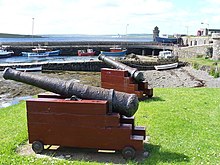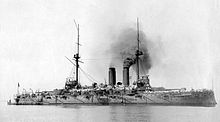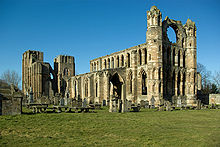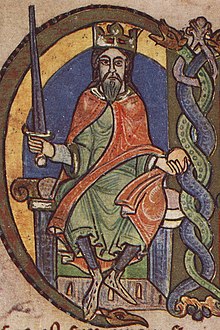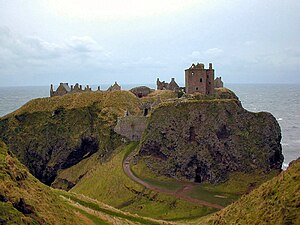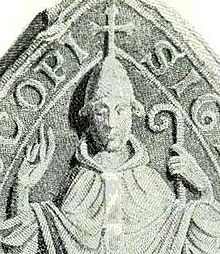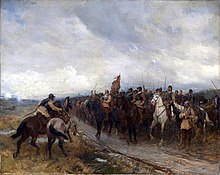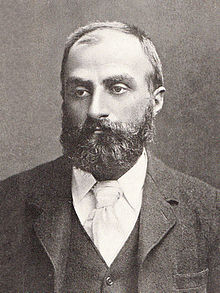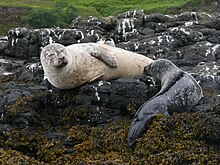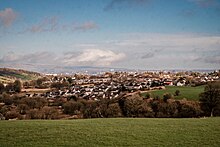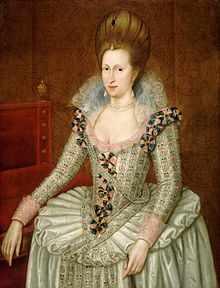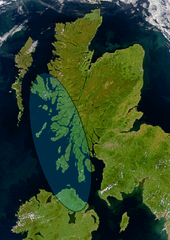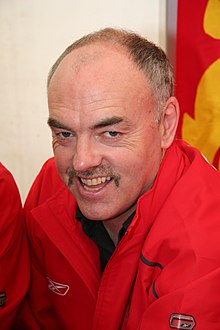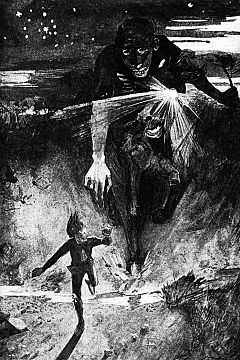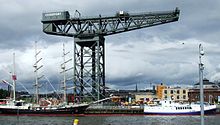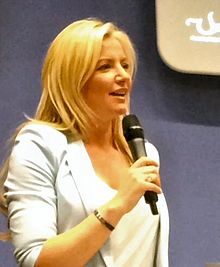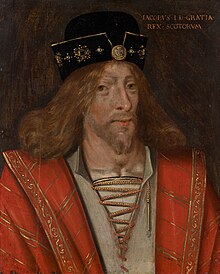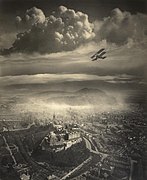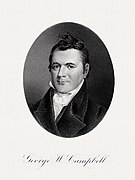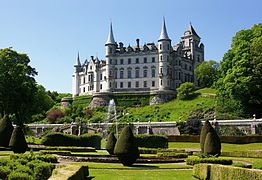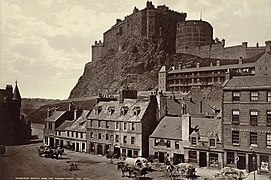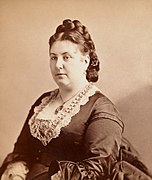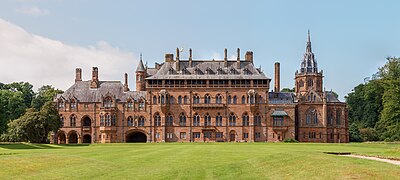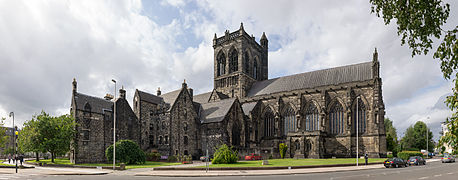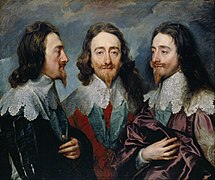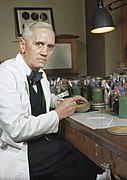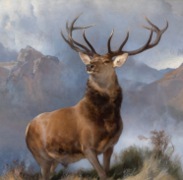Portal:Scotland/Featured
The Scotland Portal
View from An Teallach
| Main Page | Selected articles 1 | Selected articles 2 | Selected biographies | Selected quotes | Selected pictures | Featured Content | Categories & Topics |
Selection of featured articles
Selection of good articles

Government in early modern Scotland included all forms of administration, from the crown, through national institutions, to systems of local government and the law, between the early sixteenth century and the mid-eighteenth century. It roughly corresponds to the early modern era in Europe, beginning with the Renaissance and Reformation and ending with the last Jacobite risings and the beginnings of the industrial revolution. Monarchs of this period were the Stuarts: James IV, James V, Mary Queen of Scots, James VI, Charles I, Charles II, James VII, William III and Mary II, Anne, and the Hanoverians: George I and George II.
The crown remained the most important element of government throughout the period and, despite the many royal minorities, it saw many of the aspects of aggrandisement associated with "new monarchy" elsewhere in Europe. Theories of limited monarchy and resistance were articulated by Scots, particularly George Buchanan, in the sixteenth century, but James VI advanced the theory of the divine right of kings, and these debates were restated in subsequent reigns and crises. The court remained at the centre of political life, and in the sixteenth century emerged as a major centre of display and artistic patronage. The Privy Council and the great offices of state, remained central to the administration of the government, even after the departure of the Stuart monarchs to rule in England from 1603, but they were often sidelined and was abolished after the Act of Union of 1707, with rule direct from London. Parliament was also vital to the running of the country, providing laws and taxation, but it had fluctuating fortunes and never achieved the centrality the national life of its counterpart in England before it was disbanded in 1707. (Full article...)
A brownie or broonie (Scots), also known as a brùnaidh or gruagach (Scottish Gaelic), is a household spirit or Hobgoblin from Scottish folklore that is said to come out at night while the owners of the house are asleep and perform various chores and farming tasks. The human owners of the house must leave a bowl of milk or cream or some other offering for the brownie, usually by the hearth. Brownies are described as easily offended and will leave their homes forever if they feel they have been insulted or in any way taken advantage of. Brownies are characteristically mischievous and are often said to punish or pull pranks on lazy servants. If angered, they are sometimes said to turn malicious, like boggarts.
Brownies originated as domestic tutelary spirits, very similar to the Lares of ancient Roman tradition. Descriptions of brownies vary regionally, but they are usually described as ugly, brown-skinned, and covered in hair. In the oldest stories, they are usually human-sized or larger. In more recent times, they have come to be seen as small and wizened. They are often capable of turning invisible, and they sometimes appear in the shapes of animals. They are always either naked or dressed in rags. If a person attempts to present a brownie with clothing or baptize it, it will leave forever. (Full article...)
Ibrox Stadium (Scottish Gaelic: Stadium Ibrox) is a football stadium on the south side of the River Clyde in the Ibrox area of Glasgow, Scotland. The home of Scottish Premiership team Rangers Football Club, Ibrox is the third largest football stadium in Scotland, with an all-seated capacity of 50,987. The stadium was designed by renowned football stadium architect Archibald Leitch, with renovations to the stadium between 1978 and 1981, as well as 1990 and 1991, being designed by The Miller Partnership and Gareth Hutchison respectively.
Opened as Ibrox Park in 1899, it suffered a disaster in 1902 when a wooden terrace collapsed. Vast earthen terraces were built in its place, and a main stand, now a listed building, in 1928. A British record crowd of 118,567 gathered in January 1939 for a league match with Celtic. After another disaster in 1971, the stadium was largely rebuilt. The vast bowl-shaped terracing was removed and replaced by three rectangular, all-seated stands by 1981. After renovations were completed in 1997, the ground was renamed Ibrox Stadium. (Full article...)
The 2002 Scottish Challenge Cup final, also known as the Bell's Cup final for sponsorship reasons, was an association football match between Brechin City and Queen of the South on 20 October 2002 at Broadwood Stadium in Cumbernauld. It was the 12th final of the Scottish Challenge Cup since it was first organised in 1990 to celebrate the centenary of the Scottish Football League.
Both teams progressed through four knock-out rounds to reach the final. The match was Brechin City's first national cup final in its 96-year history whilst it was Queen of the South's second appearance in the final of the tournament having lost in 1997. The tournament was contested by clubs below the Scottish Premier League; Queen of the South from the First Division and Brechin City from the Second Division. (Full article...)
Both teams progressed through four knock-out rounds to reach the final. The match was Brechin City's first national cup final in its 96-year history whilst it was Queen of the South's second appearance in the final of the tournament having lost in 1997. The tournament was contested by clubs below the Scottish Premier League; Queen of the South from the First Division and Brechin City from the Second Division. (Full article...)
Staffa (Scottish Gaelic: Stafa, pronounced [ˈs̪t̪afa], from the Old Norse for stave or pillar island) is an island of the Inner Hebrides in Argyll and Bute, Scotland. The Vikings gave it this name as its columnar basalt reminded them of their houses, which were built from vertically placed tree-logs.
Staffa lies about 10 kilometres (6 miles) west of the Isle of Mull; its area is 33 hectares (82 acres) and the highest point is 42 metres (138 feet) above sea level. (Full article...)
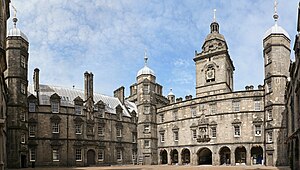
Architecture in early modern Scotland encompasses all building within the borders of the kingdom of Scotland, from the early sixteenth century to the mid-eighteenth century. The time period roughly corresponds to the early modern era in Europe, beginning with the Renaissance and Reformation and ending with the start of the Enlightenment and Industrialisation.
Vernacular architecture made use of local materials such as stone, turf and, where available, wood. Most of the population was housed in small hamlets and isolated dwellings. The most common form of dwelling throughout Scotland was the long house, shared by humans and animals. About ten percent of the population lived in the burghs, in a mixture of half-timbered and stone houses. (Full article...)
Michelle Georgina Mone, Baroness Mone, OBE (née Allan; born 8 October 1971) is a Scottish businesswoman and life peer. She has set up several businesses, including MJM International Ltd in 1996 and the lingerie company Ultimo along with her then husband Michael Mone. Other ventures include naturopathic 'weight-loss' pills, and a fake tan product via Ultimo Beauty.
Mone became a Conservative life peer in 2015. During the COVID-19 pandemic, Mone's husband's company, PPE Medpro was awarded £200m of contracts to provide PPE by the UK government. The company made a profit of £60m and some of the products they provided were defective and went unused. From 2020 to 2023, Mone vehemently denied that she or her husband had any involvement with the contracts. In January 2022 The House of Lords Commissioner for Standards and National Crime Agency launched investigations into Mone's links to the contracts. Mone announced in December that year that she was taking a leave of absence from the House of Lords "to clear her name" amid the allegations. Shortly afterwards the UK government announced plans to sue PPE Medpro for £122 million plus costs over the defective items. In December 2023, Mone disclosed that she had been involved with PPE Medpro and said she had previously denied it to protect her family. In February 2024, a leak revealed that five months prior to £29 million of PPE Medpro's profits being transferred into a trust that Mone would benefit from, she assured the government that she wouldn't gain "any financial benefit whatsoever", and that there were "no conflicts whatsoever" with regard to the company she had recommended to the government. (Full article...)
The National is a Scottish daily newspaper owned by Newsquest. It began publication on 24 November 2014, and was the first daily newspaper in Scotland to support Scottish independence. Launched as a response to calls from Newsquest's readership for a pro-independence paper in the wake of the 2014 Scottish independence referendum, it is a sister paper of The Herald, and is edited by Laura Webster. Initially published on weekdays, a Saturday edition was added in May 2015. The National is printed in tabloid format, and is also available via online subscription.
Details of its launch were announced on 21 November, with further information given at a Scottish National Party (SNP) rally the following day. It was launched on a five-day trial basis against the backdrop of a general decline in newspaper sales, with an initial print-run of 60,000 copies for its first edition, but this was increased the following day as a result of public demand, and Newsquest decided to print it on a permanent basis after healthy sales continued throughout the first week. The first front page carried a story about charities urging devolution of powers over welfare legislation to Scotland. (Full article...)
Details of its launch were announced on 21 November, with further information given at a Scottish National Party (SNP) rally the following day. It was launched on a five-day trial basis against the backdrop of a general decline in newspaper sales, with an initial print-run of 60,000 copies for its first edition, but this was increased the following day as a result of public demand, and Newsquest decided to print it on a permanent basis after healthy sales continued throughout the first week. The first front page carried a story about charities urging devolution of powers over welfare legislation to Scotland. (Full article...)
HMS Hurst Castle (K416) was one of 44 Castle-class corvettes built for the Royal Navy during World War II. Completed in June 1944, she began escorting convoys in August and was sunk by a German U-boat the following month. (Full article...)
Andrew Stuart Murray McCall (born 10 June 1964) is a professional football coach and former player. He was most recently assistant manager at Sheffield United.
McCall played in a total of 763 league games and in 40 full international matches for Scotland during his playing career. (Full article...)
James I (late July 1394 – 21 February 1437) was King of Scots from 1406 until his assassination in 1437. The youngest of three sons, he was born in Dunfermline Abbey to King Robert III and Annabella Drummond. His older brother David, Duke of Rothesay, died under suspicious circumstances during detention by their uncle, Robert, Duke of Albany. James' other brother, Robert, died young. Fears surrounding James's safety grew through the winter of 1405/06 and plans were made to send him to France. In February 1406, James was forced to take refuge in the castle of the Bass Rock in the Firth of Forth after his escort was attacked by supporters of Archibald, 4th Earl of Douglas. He remained at the castle until mid-March, when he boarded a vessel bound for France. On 22 March, English pirates captured the ship and delivered the prince to Henry IV of England. The ailing Robert III died on 4 April and the 11-year-old James, now the uncrowned King of Scots, would not regain his freedom for another eighteen years.
James was educated well during his English imprisonment, sometimes in the Tower of London, Windsor Castle, and other English castles. He seems to have been generally well-treated, and he developed a respect for English methods of governance. The Scottish king, perhaps willingly, joined Henry V in his military campaigns in France between 1420 and 1421. His cousin, Murdoch Stewart, Albany's son, who had been an English prisoner since 1402, was traded for Henry Percy, 2nd Earl of Northumberland, in 1416. However, Albany refused to negotiate for James's release. James married Joan Beaufort, daughter of the Earl of Somerset, in February 1424. This was just before his release in April. The king's re-entry into Scottish affairs was not altogether popular, since he had fought on behalf of Henry V in France and at times against Scottish forces. Noble families now faced increased taxes to cover the ransom payments, and would also have to provide family hostages as security. James, who excelled in sports such as wrestling and tennis, literature, and music, also strongly desired to impose law and order on his subjects. Sometimes he applied such order selectively. (Full article...)

The University of Edinburgh (Scots: University o Edinburgh, Scottish Gaelic: Oilthigh Dhùn Èideann; abbreviated as Edin. in post-nominals) is a public research university based in Edinburgh, Scotland. Founded by the town council under the authority of a royal charter of King James VI in 1582 and officially opened in 1583, it is one of Scotland's four ancient universities and the sixth-oldest university in continuous operation in the English-speaking world. The university played an important role in Edinburgh becoming a chief intellectual centre during the Scottish Enlightenment and contributed to the city being nicknamed the "Athens of the North".
The three main global university rankings (ARWU, THE, and QS) all place Edinburgh within their respective top 40. It is a member of several associations of research-intensive universities, including the Coimbra Group, League of European Research Universities, Russell Group, Una Europa, and Universitas 21. In the fiscal year ending 31 July 2023, it had a total income of £1.341 billion, of which £339.5 million was from research grants and contracts. It has the third-largest endowment in the UK, behind only Cambridge and Oxford. The university occupies five main campuses in the city of Edinburgh, which include many buildings of historical and architectural significance such as those in the Old Town. (Full article...)

Scottish society in the early modern era encompasses the social structure and relations that existed in Scotland between the early sixteenth century and the mid-eighteenth century. It roughly corresponds to the early modern era in Europe, beginning with the Renaissance and Reformation and ending with the last Jacobite risings and the beginnings of the industrial revolution.
Scotland in this period was a hierarchical society, with a complex series of ranks and orders. This was headed by the monarch and the great magnates. Below them were the lairds, who emerged as a distinct group at the top of local society was whose position was consolidated by economic and administrative change. Below the lairds in rural society were a variety of groups, often ill-defined, including yeomen, who were often major landholders, and the husbandmen, who were landholders, followed by cottars and grassmen, who often had only limited rights to common land and pasture. Urban society was led by wealthy merchants, who were often burgesses. Beneath them, and often in conflict with the urban elite, were the craftsmen. Beneath these ranks, in both urban and rural society, there were a variety of groups of mobile "masterless men", the unemployed and vagrants. (Full article...)
Urquhart Castle (/ˈɜːrkərt/ UR-kərt; Scottish Gaelic: Caisteal na Sròine) is a ruined castle that sits beside Loch Ness in the Highlands of Scotland. The castle is on the A82 road, 21 kilometres (13 mi) south-west of Inverness and 2 kilometres (1.2 mi) east of the village of Drumnadrochit.
The present ruins date from the 13th to the 16th centuries, though built on the site of an early medieval fortification. Founded in the 13th century, Urquhart played a role in the Wars of Scottish Independence in the 14th century. It was subsequently held as a royal castle and was raided on several occasions by the MacDonald Earls of Ross. The castle was granted to the Clan Grant in 1509, though conflict with the MacDonalds continued. Despite a series of further raids the castle was strengthened, only to be largely abandoned by the middle of the 17th century. Urquhart was partially destroyed in 1692 to prevent its use by Jacobite forces, and subsequently decayed. In the 20th century, it was placed in state care as a scheduled monument and opened to the public: it is now one of the most-visited castles in Scotland and received 547,518 visitors in 2019. (Full article...)
Johann MacDougall Lamont (/ˈdʒoʊæn læmʌnt/; born 11 July 1957) is a Scottish Labour Co-operative politician who served as Leader of the Scottish Labour Party from 2011 to 2014. She was previously a junior Scottish Executive minister from 2004 to 2007 and Deputy Leader of the Scottish Labour Party from 2008 until her election to the leadership in 2011. In addition to her ministerial and leadership roles, she has been a campaigner on equality issues and violence against women throughout her political career.
Born in Glasgow, Lamont attended Woodside Secondary School and obtained a degree from the University of Glasgow. After studying for teaching qualifications at Jordanhill College, she became a schoolteacher. Active in the Labour Party since she was at university, Lamont served on its Scottish Executive Committee, and chaired it in 1993. With the establishment of a devolved legislature in Scotland, she was elected as the Member of the Scottish Parliament (MSP) for Glasgow Pollok in 1999. Having been appointed convener of the Scottish Parliament's Social Justice Committee in 2001, she obtained her first ministerial role in a Labour–Liberal Democrat coalition in October 2004 and served until its defeat by the Scottish National Party (SNP) in 2007. (Full article...)

Scottish religion in the eighteenth century includes all forms of religious organisation and belief in Scotland in the eighteenth century. This period saw the beginnings of a fragmentation of the Church of Scotland that had been created in the Reformation and established on a fully Presbyterian basis after the Glorious Revolution. These fractures were prompted by issues of government and patronage, but reflected a wider division between the Evangelicals and the Moderate Party. The legal right of lay patrons to present clergymen of their choice to local ecclesiastical livings led to minor schisms from the church. The first in 1733, known as the First Secession and headed by figures including Ebenezer Erskine, led to the creation of a series of secessionist churches. The second in 1761 led to the foundation of the independent Relief Church.
In 1743, the Cameronians established themselves as the Reformed Presbyterian Church, remaining largely separate from religious and political debate. Of independent churches from England that were established in the seventeenth century only the Quakers managed to endure in to the eighteenth century. Baptist chapels were re-established in the middle of the century and, although Scotland initially appeared fertile ground for Methodism, it failed to expand as quickly as elsewhere in the Great Britain and Ireland. A number of minor Scottish sects developed, such as the Bereans, Buchanites, Daleites and Glassites. (Full article...)
Hibernian Football Club (/hɪˈbɜːrniən/), commonly known as Hibs, is a professional football club in Edinburgh, Scotland. The team competes in the Scottish Premiership, the top division of Scottish football. The club was founded in 1875 by members of Edinburgh's Irish community, and the name is derived from the Latin for Ireland. The Irish heritage of Hibernian is still reflected in the name, colours and badge of the club. The green main shirt colour is usually accompanied by white sleeves and shorts. Their local rivals are Heart of Midlothian, with whom they contest the Edinburgh derby.
Home matches are played at Easter Road, which has been in use since 1893, when the club joined the Scottish Football League. The name of the club is regularly shortened to Hibs, with the team also being known as The Hibees (pronounced /ˈhaɪbiːz/) and supporters known as Hibbies. Another nickname is The Cabbage, derived from the shortened rhyming slang for Hibs ("Cabbage and Ribs"). (Full article...)
Home matches are played at Easter Road, which has been in use since 1893, when the club joined the Scottish Football League. The name of the club is regularly shortened to Hibs, with the team also being known as The Hibees (pronounced /ˈhaɪbiːz/) and supporters known as Hibbies. Another nickname is The Cabbage, derived from the shortened rhyming slang for Hibs ("Cabbage and Ribs"). (Full article...)
Lists of featured content
| This is a list of recognized content, updated weekly by JL-Bot (talk · contribs) (typically on Saturdays). There is no need to edit the list yourself. If an article is missing from the list, make sure it is tagged (e.g. {{WikiProject Scotland}}) or categorized correctly and wait for the next update. See WP:RECOG for configuration options. |
Featured articles
- Áedán mac Gabráin
- Anglo-Scottish war (1650–1652)
- Anne, Queen of Great Britain
- Anne of Denmark
- HMS Argus (I49)
- Japanese battleship Asahi
- Battle of Blenheim
- Blue men of the Minch
- William Bruce (architect)
- William Speirs Bruce
- Burke and Hare murders
- Burnt Candlemas
- Constantine II of Scotland
- Cullen House
- David I of Scotland
- Walter Donaldson (snooker player)
- Donnchadh, Earl of Carrick
- Alec Douglas-Home
- Battle of Dunbar (1650)
- Edward I of England
- Elgin Cathedral
- Queen Elizabeth The Queen Mother
- Fauna of Scotland
- From the Doctor to My Son Thomas
- Rachel Chiesley, Lady Grange
- Margaret Macpherson Grant
- Great North of Scotland Railway
- Bryan Gunn
- Battle of Halidon Hill
- HMS Hood
- Battle of Inverkeithing
- James II of England
- James VI and I
- Jocelin of Glasgow
- Kelpie
- John Knox
- Elizabeth Maitland, Duchess of Lauderdale
- Gregor MacGregor
- Mary, Queen of Scots
- Murray Maxwell
- William McGregor (football)
- Nebula Science Fiction
- Neilston
- Nuckelavee
- Order of the Thistle
- Pitfour estate
- HMS Ramillies (07)
- Renewable energy in Scotland
- Representative peer
- HMS Royal Oak (08)
- Scotland in the High Middle Ages
- Scotland national football team
- Scottish National Antarctic Expedition
- Shapinsay
- Isle of Skye
- Charlotte Stuart, Duchess of Albany
- HMS Vanguard (23)
- Second War of Scottish Independence
- John Wark
- Westminster Assembly
- John Michael Wright
Former featured articles
Good articles
- A82 road
- 2001 Scottish Masters
- 2002 Scottish Masters
- 2014 Scottish Labour leadership election
- 2022 Aberdeen City Council election
- 2022 Aberdeenshire Council election
- 2022 Angus Council election
- 2022 Argyll and Bute Council election
- 2022 Clackmannanshire Council election
- 2022 East Ayrshire Council election
- 2022 Glasgow City Council election
- 2022 North Ayrshire Council election
- 2022 South Ayrshire Council election
- 2022 South Lanarkshire Council election
- Aberdeen F.C.
- Aberdeen F.C.–Rangers F.C. rivalry
- Aberdour Castle
- William Adam (architect)
- Arbroath
- Architecture of Scotland
- Architecture in early modern Scotland
- Architecture in modern Scotland
- Architecture of Scotland in the Industrial Revolution
- Architecture of Scotland in the Middle Ages
- Architecture of Scotland in the Roman era
- Architecture of Scotland in the prehistoric era
- Isle of Arran
- Art in Medieval Scotland
- Art in early modern Scotland
- Art in modern Scotland
- James Balfour (died 1845)
- John Barrowman
- Battle of Barry
- Jim Baxter
- Ian Begg (architect)
- Ben Nevis
- Lewis Benson (boxer)
- Guy Berryman
- The Bhoys from Seville
- Billy Boys
- The Black Island
- HMS Bonaventure (31)
- Boobrie
- Eilley Bowers
- Bill Bowman (Scottish politician)
- British people
- Gordon Brown
- Brownie (folklore)
- Alexander Buchan (artist)
- Calendar (New Style) Act 1750
- James Campbell (British Army officer, died 1745)
- Camus Cross
- Thomas Carlyle
- Castles in Scotland
- Celtic F.C. in European football
- Celtic Park
- Erik Chisholm
- Church architecture in Scotland
- Winston Churchill
- Clan Maclachlan
- Clydesdale horse
- HMS Conqueror (1911)
- The Cookery Book of Lady Clark of Tillypronie
- Coxton Tower
- Craigiehall
- Lord Ninian Crichton-Stuart
- Cruachan Power Station
- Cullen Old Church
- 1966 European Cup Winners' Cup final
- The Daily Mash
- Dandie Dinmont Terrier
- Ruth Davidson
- Demographic history of Scotland
- Paul Dickov
- Mary Docherty
- Donkey Punch (novel)
- Doune Castle
- Dowhill Castle
- Dubh Artach
- Andrew Dudley
- Duncraig Castle
- Dunnottar Castle
- Dunrobin Castle
- Dunstaffnage Castle
- East Kirkton Quarry
- East Stirlingshire F.C.
- Easter Road
- Economy of Scotland in the Middle Ages
- Economy of Scotland in the early modern period
- Edinburgh Castle
- University of Edinburgh
- Edinburgh Zoo
- Education in Medieval Scotland
- Education in early modern Scotland
- Edzell Castle
- Eenoolooapik
- Eidyn
- Elcho Castle
- English invasion of Scotland (1400)
- Eriskay Pony
- Estate houses in Scotland
- 1884 FA Cup final
- Edward G. Faile
- Fairy Flag
- Falkirk Wheel
- Family in early modern Scotland
- James Ferguson, Lord Pitfour
- James Ferguson (Scottish politician)
- Finnieston Crane
- Flag of Scotland
- Flora of Scotland
- Sir Ewan Forbes, 11th Baronet
- Forglen House
- Forth Bridge
- Forth Valley Royal Hospital
- Dario Franchitti
- Château Gaillard
- Ryan Gauld
- Geography of Scotland in the Middle Ages
- Geography of Scotland in the early modern era
- Geology of Scotland
- Giffnock
- Gilli (Hebridean earl)
- Glass Swords
- The Glenlivet distillery
- Glenrothes
- Glorious Revolution in Scotland
- Government in early modern Scotland
- Government in medieval Scotland
- Isobel Gowdie
- Grey Gowrie
- John Gregorson Campbell
- Hampden Park
- Hibernian F.C.
- Highland cattle
- Highlands and Islands Alliance
- Lists of mountains and hills in the British Isles
- Hillforts in Scotland
- History of Scotland
- History of agriculture in Scotland
- Mary Hogarth
- Housing in Scotland
- How the Scots Invented the Modern World
- Leslie Hunter
- HMS Hurst Castle
- Ibrox Stadium
- 1902 Ibrox disaster
- Illieston House
- Inchdrewer Castle
- Inner Hebrides
- James Innes (British Army officer, died 1759)
- Charles Irving (surgeon)
- Islands of the Clyde
- Islay
- James I of Scotland
- Bert Jansch
- Jarlshof
- Jocky Wilson Cup
- Kelvin Scottish
- Battle of Kinghorn
- Kirkandrews, Dumfries and Galloway
- Kirkcaldy
- Kirkcudbright Tolbooth
- Labour Party of Scotland
- Johann Lamont
- Landscape painting in Scotland
- Billy Liddell
- Literature in early modern Scotland
- Kim Little
- Loch Arkaig treasure
- Loch Henry
- Lochleven Castle
- RAF Lossiemouth
- Murder of Alesha MacPhail
- Clan MacAulay
- Doris Mackinnon
- Sorley MacLean
- Richard Madden
- SS Manasoo
- James Clerk Maxwell
- Maybole Castle
- James McAvoy
- Stuart McCall
- Angus McDonald (Virginia militiaman)
- McEwan's
- Ewan McGregor
- John George McTavish
- Johnny McNichol
- Meantime (book)
- Mingulay
- Colin Mitchell
- Michelle Mone, Baroness Mone
- Monifieth
- William Montgomerie
- James Murray, Lord Philiphaugh
- Music in early modern Scotland
- John Mylne (died 1667)
- The National (Scotland)
- John Ogilby
- One Kiss
- Orkney
- Outer Hebrides
- Paisley witches
- Papa Stour
- Partick Thistle F.C.
- Portrait painting in Scotland
- Potion (song)
- Prehistoric art in Scotland
- Raasay
- RAF Machrihanish
- Ragnall ua Ímair
- Alex Raisbeck
- Rangers F.C. signing policy
- Renaissance in Scotland
- Richard Rennison
- Rockstar Dundee
- Romanticism in Scotland
- Andrew Ross (rugby union, born 1879)
- Royal Banner of Scotland
- Rusco Tower
- St Margaret's Church, Aberlour
- St Peter's Roman Catholic Church, Buckie
- St Rufus Church
- Scandinavian Scotland
- Schiehallion experiment
- Scotland during the Roman Empire
- Scotland in the Middle Ages
- Scotland in the early modern period
- Scotland in the late Middle Ages
- Scotland in the modern era
- Scotland national football team manager
- Scotland under the Commonwealth
- Scottish art
- 1999 Scottish Challenge Cup final
- 2002 Scottish Challenge Cup final
- 2007 Scottish Challenge Cup final
- Scottish Challenge Cup
- 1873–74 Scottish Cup
- 2012 Scottish Cup final
- 2019 Scottish Open (snooker)
- 1971 Scottish soldiers' killings
- Scottish Terrier
- Scottish art in the eighteenth century
- Scottish art in the nineteenth century
- Scottish religion in the eighteenth century
- Scottish religion in the seventeenth century
- Scottish society in the Middle Ages
- Scottish society in the early modern era
- Scuttling of the German fleet at Scapa Flow
- Sea Mither
- Bill Shankly
- Shetland
- Shieling
- Sieges of Berwick (1355 and 1356)
- Ian Smith (rugby union, born 1903)
- Jimmy Speirs
- Staffa
- Jessie Stephen
- Alexander Stoddart
- Stoor worm
- John Struthers (anatomist)
- Charles Edward Stuart
- Sundrum Castle
- Philipp Tanzer
- Tay Whale
- D'Arcy Wentworth Thompson
- Thurso
- Tibbers Castle
- Titan Clydebank
- Torf-Einarr
- Tradeston Flour Mills explosion
- Trident (UK nuclear programme)
- USS Tucker (DD-374)
- German submarine U-27 (1936)
- Urquhart Castle
- James Walker (Australian politician)
- James Walker (Royal Navy officer)
- William Middleton Wallace
- Warfare in Medieval Scotland
- Warfare in early modern Scotland
- Water bull
- West Highland White Terrier
- Robert White (Virginia physician)
- Krysty Wilson-Cairns
- Witch trials in early modern Scotland
- Andrew Wodrow
- Women in early modern Scotland
Former good articles
- Alexander Bain (inventor)
- Billy Bremner
- William Buchanan (locomotive designer)
- Canadian Gaelic
- Andrew Carnegie
- Carnoustie
- Coatbridge
- Catherine Cranston
- Arthur Conan Doyle
- Dundee United F.C.
- Steve Evans (footballer, born 1962)
- Evanton
- Forth Road Bridge
- Glasgow
- Glasgow, Paisley, Kilmarnock and Ayr Railway
- University of Glasgow
- Frank Hadden
- Halloween
- David Hume
- Jordanhill railway station
- Deborah Kerr
- Lothian Buses
- Gillian McKeith
- Andy Murray
- Picts
- Scotland
- Scots language
- Still Game
- Alec Sutherland
- Tay Bridge
- Treasure Island
- William Morrison (chemist)
Featured lists
- List of islands of Scotland
- List of Celtic F.C. managers
- List of Scottish Football League clubs
- List of Scotland international footballers
- List of Scotland ODI cricketers
- List of Scotland national football team hat-tricks
- List of Scottish football champions
- List of Scottish football clubs in the FA Cup
- PFA Scotland Players' Player of the Year
- SFWA Footballer of the Year
- Scotland national football team results (1872–1914)
- Timeline of prehistoric Scotland
- Timeline of Scottish football
Featured pictures
-
13-06-07 RaR Biffy Clyro Simon Neil 02
-
Aerial View of Edinburgh, by Alfred Buckham, from about 1920
-
Arthur-James-Balfour-1st-Earl-of-Balfour
-
CAMPBELL, George W-Treasury (BEP engraved portrait)
-
Charles Robert Leslie - Sir Walter Scott - Ravenswood and Lucy at the Mermaiden's Well - Bride of Lammermoor
-
Common seal (Phoca vitulina) 2
-
Dalziel Brothers - Sir Walter Scott - The Talisman - Sir Kenneth before the King
-
Daniel Craig McCallum by The Brady National Photographic Art Gallery
-
David Livingstone by Thomas Annan
-
Dunrobin Castle -Sutherland -Scotland-26May2008 (2)
-
Edinburgh Castle from Grass Market
-
Eilean Donan Castle, Scotland - Jan 2011
-
Falkirk Wheel Timelapse, Scotland - Diliff
-
FalkirkWheelSide 2004 SeanMcClean
-
Gavin Hamilton - Coriolanus Act V, Scene III edit2
-
Jaguar at Edinburgh Zoo
-
Jeremiah Gurney - Photograph of Euphrosyne Parepa-Rosa
-
Loch Torridon, Scotland
-
Mount Stuart House 2018-08-25
-
N. M. Price - Sir Walter Scott - Guy Mannering - At the Kaim of Derncleugh
-
NEWScotland-2016-Aerial-Blackness Castle 01
-
Nils Olav inspects the Kings Guard of Norway after being bestowed with a knighthood at Edinburgh Zoo in Scotland
-
Paisley Abbey Interior East
-
Paisley Abbey from the south east
-
Prince James Francis Edward Stuart by Alexis Simon Belle
-
Robert William Thomson - Illustrated London News March 29 1873
-
Scotland-2016-West Lothian-Hopetoun House 02
-
Sgùrr nan Gillean from Sligachan, Isle of Skye, Scotland - Diliff
-
Sir Anthony Van Dyck - Charles I (1600-49) - Google Art Project
-
St Matthew's Church - Paisley - Interior - 5
-
Synthetic Production of Penicillin TR1468
-
The Air Ministry, 1939-1945. CH10270 – Edit 1
-
The Monarch of the Glen, Edwin Landseer, 1851
-
The Skating Minister
-
Thomas Keene in Macbeth 1884 Wikipedia crop
-
View of loch lomond
-
Wemyss Bay railway station concourse 2018-08-25 2
-
William John Macquorn Rankine by Thomas Annan
Get involved
For editor resources and to collaborate with other editors on improving Wikipedia's Scotland-related articles, see WikiProject Scotland.
To get involved in helping to improve Wikipedia's Scotland related content, please consider doing some of the following tasks or joining one or more of the associated Wikiprojects:
- Visit the Scottish Wikipedians' notice board and help to write new Scotland-related articles, and expand and improve existing ones.
- Visit Wikipedia:WikiProject Scotland/Assessment, and help out by assessing unrated Scottish articles.
- Add the Project Banner to Scottish articles around Wikipedia.
- Participate in WikiProject Scotland's Peer Review, including responding to PR requests and nominating Scottish articles.
- Help nominate and select new content for the Scotland portal.
Do you have a question about The Scotland Portal that you can't find the answer to?
Post a question on the Talk Page or consider asking it at the Wikipedia reference desk.
Related portals
Wikipedia in other relevant languages
Associated Wikimedia
The following Wikimedia Foundation sister projects provide more on this subject:
-
Commons
Free media repository -
Wikibooks
Free textbooks and manuals -
Wikidata
Free knowledge base -
Wikinews
Free-content news -
Wikiquote
Collection of quotations -
Wikisource
Free-content library -
Wikispecies
Directory of species -
Wikiversity
Free learning tools -
Wikivoyage
Free travel guide -
Wiktionary
Dictionary and thesaurus


![Image 1 Duke of Marlborough signing the Despatch at Blenheim The Battle of Blenheim (German: Zweite Schlacht bei Höchstädt; French: Bataille de Höchstädt; Dutch: Slag bij Blenheim) fought on 13 August [O.S. 2 August] 1704, was a major battle of the War of the Spanish Succession. The overwhelming Allied victory ensured the safety of Vienna from the Franco-Bavarian army, thus preventing the collapse of the reconstituted Grand Alliance. Louis XIV of France sought to knock the Holy Roman Emperor, Leopold, out of the war by seizing Vienna, the Habsburg capital, and gain a favourable peace settlement. The dangers to Vienna were considerable: Maximilian II Emanuel, Elector of Bavaria, and Marshal Ferdinand de Marsin's forces in Bavaria threatened from the west, and Marshal Louis Joseph de Bourbon, duc de Vendôme's large army in northern Italy posed a serious danger with a potential offensive through the Brenner Pass. Vienna was also under pressure from Rákóczi's Hungarian revolt from its eastern approaches. Realising the danger, the Duke of Marlborough resolved to alleviate the peril to Vienna by marching his forces south from Bedburg to help maintain Emperor Leopold within the Grand Alliance. (Full article...)](http://upload.wikimedia.org/wikipedia/en/d/d2/Blank.png)

